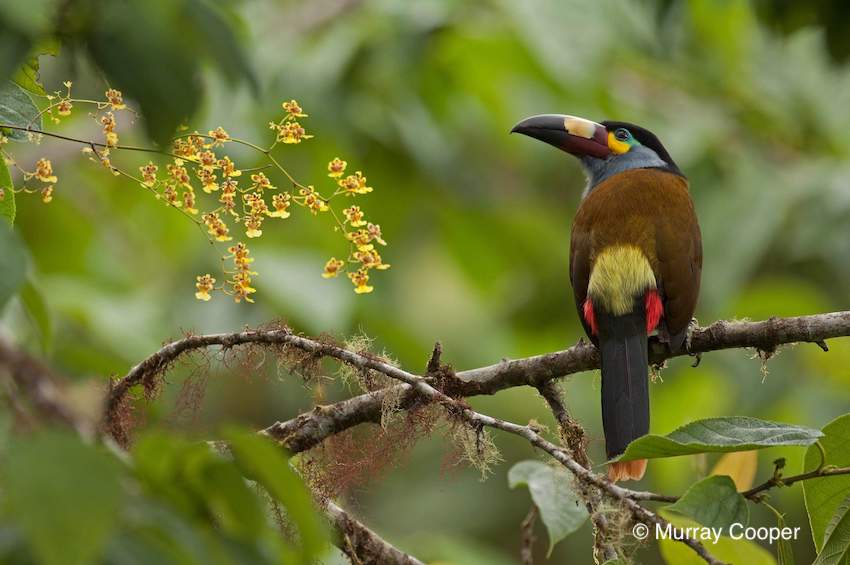WHAT IS LOS CEDROS?
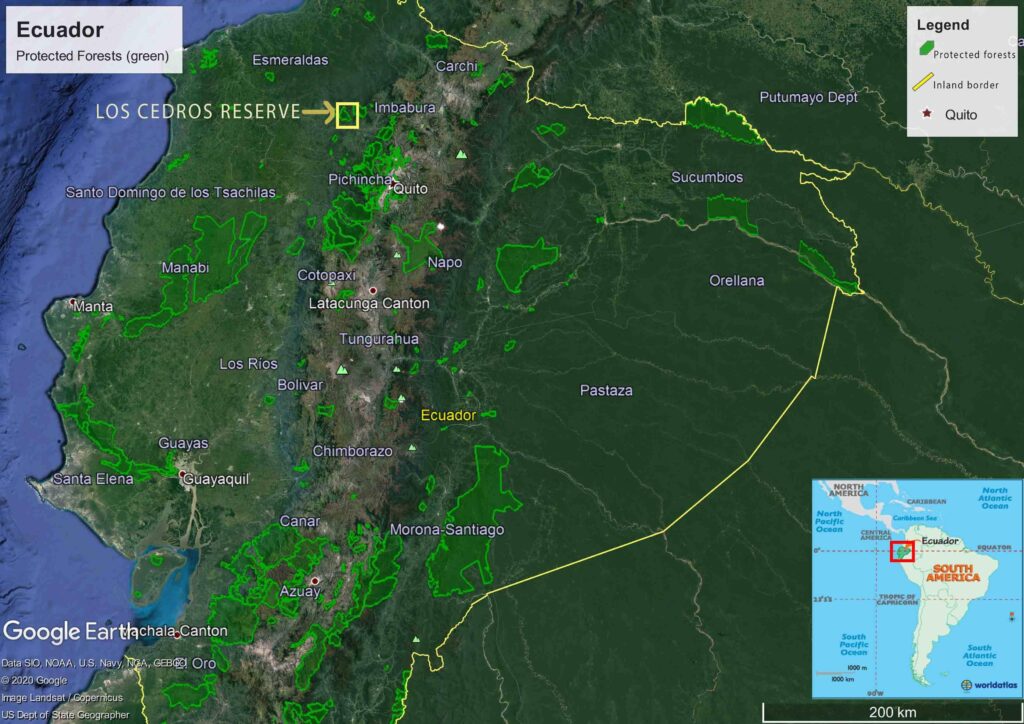
Founded in 1988, the Los Cedros Biological Reserve in north-western Ecuador covers 4800 Ha (11,861 acres) of premontane wet tropical forest and cloud forest, of which more than 4094 Ha (10,117 acres) is primary forest.
The reserve is a southern buffer zone for the 182,109 Ha (450,000 acre) Cotocachi-Cayapas Ecological Reserve, and both are part of the Choco Phytogeographical Zone, one of the most biologically diverse and endemic habitats on Earth.
Not only does the reserve protect the forest from further deforestation, it protects the four major watersheds within it.
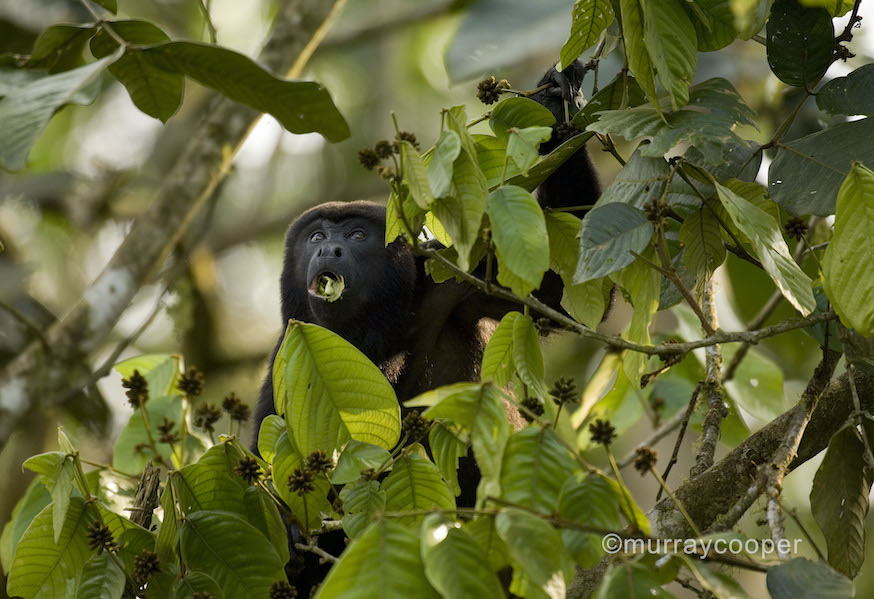
Scientists have found in Los Cedros Reserve
6 critically endangered species
40 endangered species
121 vulnerable species
75 near threatened species
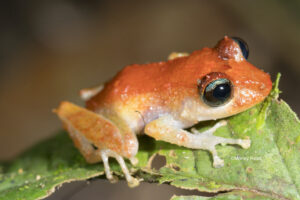
The reserve also hosts a huge diversity of rare and endangered species, such as the critically endangered Black-and-Chestnut Eagle. There are 358 currently known birds at the reserve, with more than 400 species predicted. Six species of felines roam their territories in the reserve along with primates like the endangered Ecuadorian Mantled Howler monkey (pictured above) and the critically endangered Brown-Headed Spider Monkey. There are also numerous species of invertebrates, snakes, lizards and frogs, some of which can only be found at Los Cedros.
LOS CEDROS AND THE RIGHTS OF NATURE

In 2017, the Ecuadorian government announced new concessions for mining exploration over 2.9 million hectares (6.18m acres) of the country, a 300% increase. Many of these concessions are in protected forests and indigenous territories, headwater ecosystems and biodiversity hotspots, in direct violation of Ecuador's Laws, including its Rights of Nature.
Canadian mining company Cornerstone Capital Resources was given a permit for gold exploration in collaboration with the Ecuadorian state mining company, ENAMI despite the Ministry of Environment’s own publication citing Los Cedros in its “Areas of Priority for the Conservation of Biodiversity in Ecuador”.
After a long battle from provincial courts all the way up to the highest court in the land, on December 16 2021, the Constitutional Court ruled that Los Cedros Reserve should be protected from activities that threaten the rights of nature.
This case applied for the first time Ecuador’s constitutionally guaranteed Rights of Nature within legally titled Protected Forests. The win sets a precedent to support other communities, territories and ecosystems in Ecuador that are threatened or affected by extractivism. It also ratifies the leading role of communities in environmental protection, the need to effectively consult and submit to the highest public scrutiny the activity proposal.
“The sentence is an advance in the protection of the rights of nature and environmental consultation, generating standards significantly aligned with the vision of the constitution and of living well," said Gustavo Redín of CEDENMA.
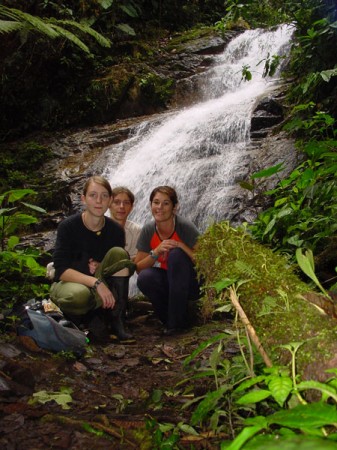
Los Cedros Biological Reserve welcomes short-term visitors, researchers, conservationists and volunteers to a remote and adventurous piece of paradise. A trip to the reserve is an extraordinary opportunity to see the nature of a cloud forest in a direct, unfiltered way. It’s about as off the beaten track as you can get and yet it can be reached from Quito in only one day.
The Reserve is a non-profit organization that depends on the hard work and contributions of volunteers for its continued survival. Volunteers muck-in where they are needed and typical day-to-day tasks can include trail maintenance and development, assisting with research project work, and development of new projects.
Los Cedros has a very open philosophy and will consider any reasonable research project proposal. As well as management support, research teams can also expect to have the enthusiastic efforts of the volunteers to assist with their project work. In fact, assisting with scientific research is why many people apply to become volunteers at Los Cedros in the first place.

